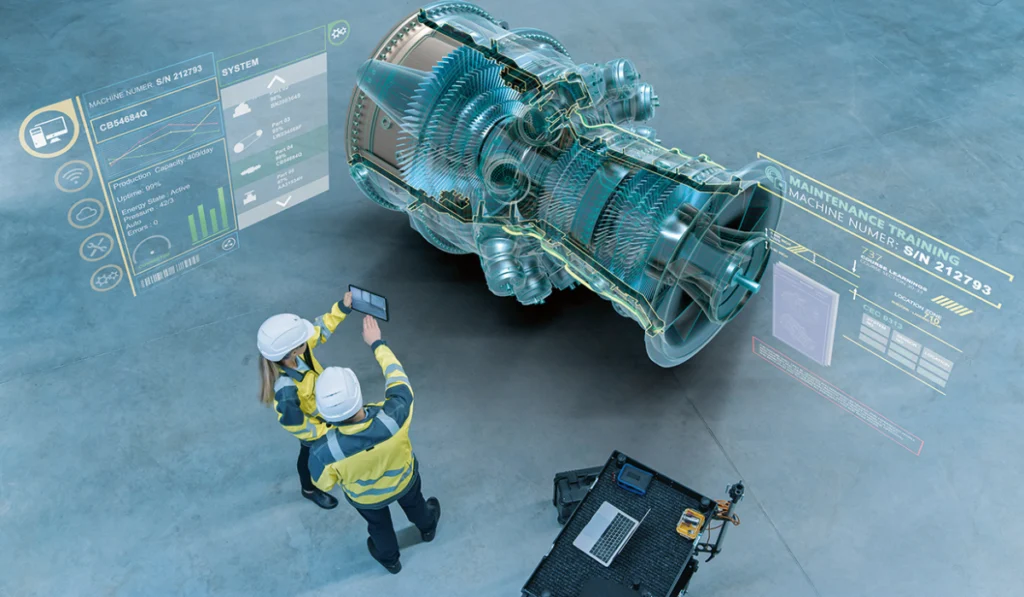AR and VR: The New Frontier of Digital Experience and Digital Twins
The technological revolution is advancing rapidly, and now with the development of Augmented Reality (AR), Virtual Reality (VR), and Digital Twins, innovations are not only redefining how we interact with the digital world but also offering unprecedented opportunities to improve efficiency and productivity across various industries. In this post, we will explore how the convergence of these technologies is creating immersive and dynamic experiences, their benefits, practical applications, and the promising future that awaits us.
Technological Convergence
The combination of AR, VR, and Digital Twins is revolutionizing the way we perceive and manage information. AR allows for the overlay of digital elements in the real world, while VR offers fully immersive experiences in digital environments. The Digital Twins enable real-time monitoring and simulation of their behavior. Together, these technologies create a synergy that enriches the digital experience in ways never seen before.
Benefits

Enhances Understanding of Asset
Behavior Digital Twins provide a detailed and accurate view of the state of physical assets. This allows companies to understand better how their systems operate and detect anomalies before they become serious problems.
Promotes Informed Decision-Making
With real-time data and accurate simulations, organizations can make more informed and strategic decisions. The ability to predict outcomes and evaluate different scenarios significantly reduces risks and optimizes resources.
Optimizes Production Lines
In the manufacturing sector, the integration of AR and VR with Digital Twins facilitates product design, production planning, and real-time problem resolution, increasing efficiency and reducing downtime.
Solves Equipment Issues
Constant monitoring and predictive analysis allow for the identification of failures before they occur, facilitating preventive maintenance and reducing costs associated with unexpected repairs.
Provides Remote Training
Employee training through AR and VR offers an interactive and realistic learning experience, regardless of geographical location. This is especially useful in situations where physical access to equipment or facilities is limited.
Improves Efficiency and Productivity
By automating and optimizing processes with these technologies, companies can reduce the time and resources required to complete tasks, thus improving overall efficiency and productivity.
Applications

Manufacturing
In manufacturing, AR and VR are used for product design, assembly simulations, and predictive maintenance. Digital Twins allow for real-time monitoring of production lines, facilitating the identification and resolution of issues before they impact production.
Education
AR and VR are transforming education by offering interactive and engaging learning experiences. Students can take virtual tours of museums, participate in scientific simulations, and explore abstract concepts tangibly. Digital Twins facilitate the creation of personalized and efficient educational environments.
Retail
In retail, these technologies are redefining the shopping experience. AR allows customers to visualize products in their environment before purchasing, while VR offers immersive shopping experiences. Digital Twins help companies better understand consumer behavior and optimize marketing and inventory management.
The Future
AR, VR, and Digital Twins will continue to evolve, and their impact on our lives will be even greater. The convergence of these technologies promises to transform entire sectors, from manufacturing to education, offering innovative solutions and improving the quality of life. As these tools become more integrated into our daily lives, we can expect a more connected, efficient, and dynamic world.
In summary, AR, VR, and Digital Twins represent a new frontier in the digital experience. Together, they have the potential to transform the way we work, learn, and live, opening up a world of unlimited possibilities.
JOIN THE NEW REALITY!



